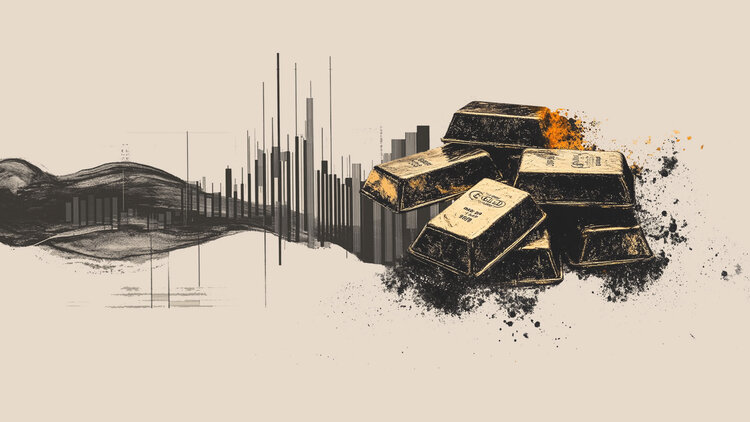Category: Forex News, News
Pound Sterling buyers could remain hesitant ahead of key BoE and Fed meetings
- GBP/USD trades in a narrow channel above 1.3550 on Monday.
- The BoE and the Fed will announce monetary policy decisions later in the week.
- The near-term technical outlook suggests that the bullish bias remains intact but lacks momentum.
GBP/USD holds its ground at the beginning of the week and trades in a tight band above 1.3550. Although the technical outlook suggests that the bullish stance remains unchanged in the near term, investors could refrain from taking large positions ahead of this week’s highly-anticipated Federal Reserve (Fed) and Bank of England (BoE) policy meetings.
British Pound PRICE Last 7 days
The table below shows the percentage change of British Pound (GBP) against listed major currencies last 7 days. British Pound was the strongest against the US Dollar.
| USD | EUR | GBP | JPY | CAD | AUD | NZD | CHF | |
|---|---|---|---|---|---|---|---|---|
| USD | -1.57% | -0.41% | -0.49% | -0.89% | -0.25% | -0.38% | -1.25% | |
| EUR | 1.57% | 1.16% | 1.08% | 0.67% | 1.36% | 1.20% | 0.32% | |
| GBP | 0.41% | -1.16% | 0.00% | -0.48% | 0.20% | 0.03% | -0.84% | |
| JPY | 0.49% | -1.08% | 0.00% | -0.40% | 0.19% | 0.06% | -0.87% | |
| CAD | 0.89% | -0.67% | 0.48% | 0.40% | 0.63% | 0.52% | -0.36% | |
| AUD | 0.25% | -1.36% | -0.20% | -0.19% | -0.63% | -0.16% | -1.03% | |
| NZD | 0.38% | -1.20% | -0.03% | -0.06% | -0.52% | 0.16% | -0.87% | |
| CHF | 1.25% | -0.32% | 0.84% | 0.87% | 0.36% | 1.03% | 0.87% |
The heat map shows percentage changes of major currencies against each other. The base currency is picked from the left column, while the quote currency is picked from the top row. For example, if you pick the British Pound from the left column and move along the horizontal line to the US Dollar, the percentage change displayed in the box will represent GBP (base)/USD (quote).
The US Dollar (USD) benefited from safe-haven flows on Friday and caused GBP/USD to end the day in negative territory, as geopolitical tensions escalated after Israel launched a military operation against Iran.
Over the weekend, Iran and Israel continued to exchange missile strikes. A spokesperson for the Israeli military said on Monday that Israel has destroyed one third of Iran’s surface-to-surface missile launchers and added that they have achieved aerial superiority over Iran.
Meanwhile, Iranian foreign ministry spokesperson Esmaeil Baghaei said on Monday that the Iranian parliament is preparing a bill to leave the nuclear Non-Proliferation Treaty (NPT) and added that they remain opposed to developing of weapons of mass destruction, per Reuters. Following these developments, markets remain relatively cautious, helping the USD stay resilient against its peers.
The economic calendar will not feature any high-impact data releases on Monday. Ahead of the Fed and the BoE meetings, Retail Sales data from the US on Tuesday and Consumer Price Index data from the UK on Wednesday could trigger short-lasting market reactions.
GBP/USD Technical Analysis
The Relative Strength Index (RSI) indicator on the 4-hour chart stays slightly above 50 and GBP/USD trades above the 20-period, 50-period and the 100-period Simple Moving Averages (SMA), suggesting that the bullish bias remains intact in the short term but lacks momentum.
On the downside, the 100-period SMA forms the immediate support level at 1.3530 before 1.3460 (static level) and 1.3425 (200-period SMA). Looking north, resistance levels could be seen at 1.3600 (mid-point of the ascending channel), 1.3630 (static level) and 1.3700 (static level, round level).
Pound Sterling FAQs
The Pound Sterling (GBP) is the oldest currency in the world (886 AD) and the official currency of the United Kingdom. It is the fourth most traded unit for foreign exchange (FX) in the world, accounting for 12% of all transactions, averaging $630 billion a day, according to 2022 data.
Its key trading pairs are GBP/USD, also known as ‘Cable’, which accounts for 11% of FX, GBP/JPY, or the ‘Dragon’ as it is known by traders (3%), and EUR/GBP (2%). The Pound Sterling is issued by the Bank of England (BoE).
The single most important factor influencing the value of the Pound Sterling is monetary policy decided by the Bank of England. The BoE bases its decisions on whether it has achieved its primary goal of “price stability” – a steady inflation rate of around 2%. Its primary tool for achieving this is the adjustment of interest rates.
When inflation is too high, the BoE will try to rein it in by raising interest rates, making it more expensive for people and businesses to access credit. This is generally positive for GBP, as higher interest rates make the UK a more attractive place for global investors to park their money.
When inflation falls too low it is a sign economic growth is slowing. In this scenario, the BoE will consider lowering interest rates to cheapen credit so businesses will borrow more to invest in growth-generating projects.
Data releases gauge the health of the economy and can impact the value of the Pound Sterling. Indicators such as GDP, Manufacturing and Services PMIs, and employment can all influence the direction of the GBP.
A strong economy is good for Sterling. Not only does it attract more foreign investment but it may encourage the BoE to put up interest rates, which will directly strengthen GBP. Otherwise, if economic data is weak, the Pound Sterling is likely to fall.
Another significant data release for the Pound Sterling is the Trade Balance. This indicator measures the difference between what a country earns from its exports and what it spends on imports over a given period.
If a country produces highly sought-after exports, its currency will benefit purely from the extra demand created from foreign buyers seeking to purchase these goods. Therefore, a positive net Trade Balance strengthens a currency and vice versa for a negative balance.
Written by : Editorial team of BIPNs
Main team of content of bipns.com. Any type of content should be approved by us.
Share this article:










